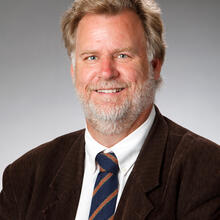Gospel: Inseparable Operations
Even careful readers of the Bible who are attentive to the church’s tradition can read the biblical texts that informed the doctrine of the Trinity and see three persons, each acting separately from the others. In the Gospel of John, Jesus says, “I still have many things to say to you, but you cannot bear them now. When the Spirit of truth comes, he will guide you into all the truth.” Later in the same passage, though, Jesus declares that the Father “will take what is mine and declare it to you.” Each person of the Trinity seems to function separately.
St. Augustine reflects this seeming separation when he describes Jesus’ baptism in the Jordan River:
I dare to say...that the Trinity seems to be separable. For Jesus has come to the river, from one place to another place; the dove has descended from heaven to the earth, from one place to another place; the voice of the Father has resounded neither from the earth, nor from the water, but from heaven. These three seem separated by place, separated by function, and separated by activity.
Sermon 52, 2
For Augustine, though, in all these activities of the three persons of the Trinity, it is always the one God who is acting. Mark DelCogliano, in his introduction to Augustine’s Sermon 52 (forthcoming in The Cambridge Edition of Early Christian Writings, Vol. 1: God), writes that “while certain divine activities belong to one person only, all three are active in that activity. For example, while only the Son was incarnated, the incarnation is the work of the Father, Son, and Spirit.” While each person of the Trinity has distinctive works, church fathers after Nicea began to speak of the doctrine of “inseparable operations,” which acknowledged that in all of the activities of the persons of the Trinity all three persons of the Trinity are at work, for “these three things are pronounced separately but act inseparably” (Sermon 52, 19).
But Augustine admits he is in a “tight spot”: How does he prove the inseparable operations of the Trinity, when the Father is not the Son, the Son not the Father and the Holy Spirit not Father or Son (Sermon 52, 3)? Augustine claims that even though only Jesus was born of the virgin, or suffered on the cross, or rose from the dead, the Father and Son were active in all of these events, as was the Holy Spirit. The Holy Spirit descends on Jesus at his baptism, or on the apostles at Pentecost, but the Father and the Son were active in all of these events. The Father is the creator of all, yet both the Son and the Holy Spirit were active in the creation. As a result, Augustine says, “you have the differentiation of the persons and the inseparability of their activity” (Sermon 52, 14).
Still, it is hard not to think in terms of three individual beings who act separately. But this is not the Trinity; the Trinity is three persons in the one God. Part of the problem is the human limitation to understand the fullness of divinity revealed to us, for God “transcends corporeal location. Let no one seek it out as if it were in a place. It is present everywhere, invisible and inseparable” (Sermon 52, 15). God’s presence as Trinity is not intended as a mystery to confuse, however, but as a means to lead us to the truth—however difficult it is to comprehend conceptually.
For another church father, Basil of Caesarea, speaking of the Trinity, wrote, “Through the holy names, he gave the knowledge of the faith that leads to salvation” (“On the Holy Spirit,” 18, 44). For it was through the inseparable operations of the Trinity, mysterious in deed and understanding, that God’s activities were revealed, through the work of the Father, Son and Holy Spirit, intended clearly and simply to guide us to salvation.
This article also appeared in print, under the headline “Inseparable Operations ,” in the May 16, 2016, issue.








